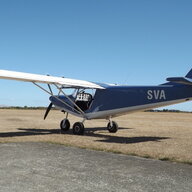Our jump club, about 20 people, managed to get a session in the Airforce (de) pressure chamber in Auckland years ago.
They took us all to 18,000ft, had us take off our masks, and the result was very pleasant, like being tipsy. Everyone was happy but lots of us couldn't now recall details from the simple briefing we had previously attended.
They then took us to 25,000ft and had us remove our masks, 2 at a time, while the rest of the group watched. The unmasked had to do simple repetitive subtractions (300 minus 7, minus 7 again etc), with regular physical checks that involved pausing the calculations and repeatedly touching their own nose then touching a finger held up in front of them (we had a couple of instructors in there with us). Most had trouble physically locating their own nose, and then accurately touching the finger. One got target fixation, insisted on continuing with this exercise and holding the instructor's wrist when he tried to take his finger away. For the most part we were told to put masks back on as our performance worsened after about 2 minutes of this. A couple didn't want to do this despite repeated commands (we all had on headsets), had to have their masks forcibly applied. And on the way back down, while the recovery is very rapid for most (with a sudden return of colour vision we hadn't noticed had faded) one continued into hypoxia, requiring oxygen and a lie down. There was also one, and a smoker at that, who had no trouble with the required exercises at 25,000ft and after a full 5 minutes was apparently entirely functional.
What came out of this for me is that our bodies generate absolutely no warning signs as hypoxia sets in...if anything, there is a sense that it's all going wonderfully well. So if in doubt, trim for descent (I believe that's right, but stand to be corrected).
And different people can be affected quite differently.




